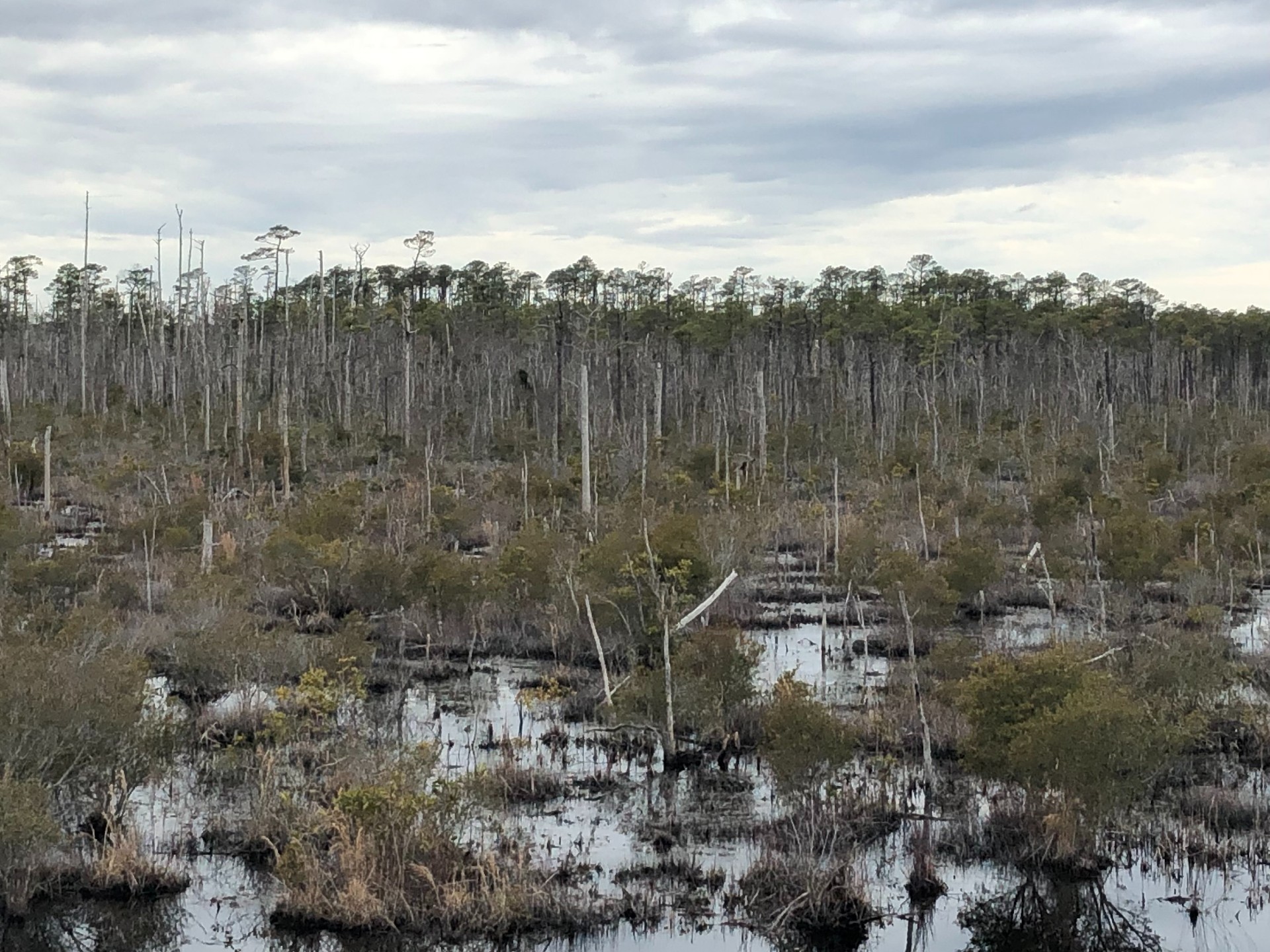

Climate change is reshaping our coastlines—and, as it turns out, the forests that live there. A new study published on April 4 in the journal Ecological Applications found that over the last several decades, a sizable portion of the forested wetlands in a coastal wildlife refuge on North Carolina’s Coastal Plain became “ghost forests”—eerily large stands of dead, leafless trees.
“The forested wetlands of North Carolina are extremely vulnerable to climate exchange,” says lead author Emily Ury, a recent biology doctoral graduate from Duke University. Using satellite images from the U.S. Geological Survey, Ury and her coauthors found that between 1985 and 2019, up to 11 percent of the area once covered by forest had deteriorated into “ghost forest,” marking a shift from bald cypress and hardwood swamp trees to woody shrub lands or salt marsh. In that time period, about 30 percent of the wildlife refuge area switched to a different vegetation type, and nearly 3,000 acres of land disappeared entirely into the ocean.
Ecologists say more changes could be coming to the area.
“This is going to be part of a major ecological transition on our coastlines as we move into our climate future,” says senior author Emily Bernhardt, an ecologist at Duke University.
Most trees don’t like drinking salt water. “A tree is constantly trying to take up nutrients through its roots,” says Bernhardt. “And when there’s too much salt, they end up taking a lot of salt instead of nutrients.” Further, seawater adds sulfate into the soil, which can become toxic to the trees.
The marshes taking over these wetland forests are incredibly important ecosystems. But the potential loss of the forests is still a major concern, says Bernhardt. Their disappearance will also mean the loss of many of the creatures that rely on them.
Trees and the soil beneath them also contain a great deal of carbon, says Ury. “Keeping that soil in place is going to be really important in the future to prevent the release of that carbon into the atmosphere, which will just compound climate change.”
A number of overlapping factors have contributed to these changes, including steady sea level rise, historical agricultural stressors like ditches and canals, and extreme weather, all blending together to shove saltwater inland. In particular, the ghost forests seem to have been encouraged by a series of extreme weather events including several years of drought (which prevents freshwater from rinsing out accumulated salt), fires and, in August 2011, Hurricane Irene.
“One of the really nice things about this study is that it showed that that gradual transition from forest to marsh that you would expect with sea level rise was really punctuated by Hurricane Irene,” says Matt Kirwan, an associate professor at the Virginia Institute of Marine Science who was not involved in the research.
The authors had already been seeing these ghost forest stands along the sides of roads and channels, says Ury, and they had suspected it was due to saltwater intrusion. But from space, “you can really see the extent of these stands that are dying, and it extends beyond what we had originally thought.” And while maps of projected sea level rise often focus on the outer fringes of the coast, Bernhardt says, that salt water can seep farther inland than you might suspect. Some of this forest loss and flora change was happening, for example, near canals more than a half mile in from the water’s edge.
[Related: Forest fires leave behind charcoal—and it might be toxic for years]
The area the researchers were studying is protected, which makes the tree deaths all the more nerve-wracking. “We’ve worked really hard through legislation and protection to hold on to these remaining coastal forested wetlands, and now they’re threatened by something that doesn’t respect those boundaries,” says Bernhardt.
And these results aren’t necessarily unique to North Carolina, says Kirwan. This pattern is being observed all over the U.S. Atlantic coast, particularly in the mid-Atlantic and the Southeast.
“The findings that they’ve observed historically are only going to intensify,” he said. “In the future, marshes are going to replace coastal forests at ever-faster rates.” The marshes themselves, of course, are not endlessly resilient.
“If there’s not room for the marshes to migrate, if there’s cities or infrastructure in the way, then the ongoing loss of the existing marsh might exceed the ability of marshes to migrate inland.”
Looking forward, Ury wants ecologists to focus more on potential strategies to mitigate problems like wetland forest loss.
“As ecologists and environmental scientists, we spend a lot of time quantifying the bad. And I think it’s high time we start exercising our ability and our creativity towards solutions.”
